I am learning a thing or two about the differences in massage qualifications between countries! It would appear that a massage therapist in Australia is required to undergo far much more study to qualify for a Diploma, than a massage therapist in the UK.
When I simultaneously completed my ITEC Diploma Course in Holistic Massage and BTEC Professional Diploma Course in Holistic Massage Practice in the UK in 2007, I was led to believe that the ITEC qualification was recognised almost globally - and certainly in Commonwealth countries such as Australia. I was aware that the higher level BTEC qualification was specific to the UK, but it gave me a deeper knowledge of massage techniques than the ITEC course would have
I thought that when I relocated back to Australia, the transfer of my qualifications would be a simple affair – have someone review and approve my UK qualifications, join the Australian Association of Massage Therapists, get insurance and get out there massaging commercially. After all, in the UK, I had been practicing commercially, was a member of the Complementary Therapists Association, and had all my insurance sorted etc.
Enter the Australian Qualification Framework (AQF) – the body that governs all accredited training courses in Australia. It’s about competencies, and any school, college, university or individual trainer who wants to offer nationally recognised courses must have their courses sanctioned under the AQF.
The Australian Association of Massage Therapists advised me to have my qualifications “RPL’d” – that is, assessed for Recognition of Prior Learning, either by a government department or one of the Australian massage schools. I chose to contact Massage Schools of Queensland and have them RPL my qualifications – I figured they would have far more of a clue about massage skills than a government department who simply mapped units of competency from the UK qualifications to the Australian framework.
Rhona, the owner of Massage Schools of Queensland was very helpful. When I was still in the UK, she asked me to send hard copies of my qualifications, detailed course syllabi and any supporting material about what my courses had included. That was all straightforward enough.
The next step was a face-to-face meeting, which I had earlier this week. We discussed my course in depth. The studies around anatomy and physiology, massage therapy practice and the clinical aspects of massage practice all seemed to map fairly consistently. Massage technique was another story however.
T o gain the minimum qualification in massage in Australia (the Certificate IV in Massage Therapy Practice), students have to complete practical units in Swedish massage, deep tissue massage, aromatherapy and reflexology. I don’t object to the fact that the Australian qualification requires students to study more modalities – in fact, I think that the more techniques a therapist can apply, the more effective treatment they can provide their clients.
In terms of the mapping to the UK qualification, my Swedish and deep tissue massage units were adequate. They had been the focus of my course. I had separately done a further, substantial qualification in seated/acupressure massage with TouchPro UK, and Rhona agreed that this could be substituted for either the aromatherapy or reflexology units. In the RPL process, “equivalent units” can also be counted – so the assessor will look to see how many hours the unit took to complete and determine whether it can be counted as an equivalent unit.
That still left me one unit short, and Rhona advised that I would need to do either the aromatherapy or reflexology modules before she could award me the Cert IV in Massage Therapy Practice.
I had previously investigated both modalities, and had intended to do some post-grad studies once life after my relocation was a bit more organised, and after I had practiced massage commercially more in Australia. When it became a matter of “you need to do another unit before you can qualify”, I decided to start a reflexology unit in July. I will most likely do the aromatherapy unit this year as well.
Once I’ve done the month’s worth of reflexology studies, I will gain my Cert IV, can join the association, get insurance, and start massaging. Who knows – I’ll probably go on to do the Diploma in Remedial Massage!
I’m all for further study, and I completely agree with the requirement for massage therapists and other holistic therapy professionals to continuously upgrade their skills - but I do object to the hoops (and additional cost!) that you have to go through to transfer qualifications between countries.
Anyway, I’m really looking forward to meeting my reflexology study buddies, and looking forward to being able to do a reflexology treatment by the end of July.
Saturday, June 21, 2008
Mapping massage qualifications across countries – not as straightforward as you would think!
Labels:
aromatherapy,
ayurvedic massage,
education,
ITEC,
qualifications,
reflexology
Subscribe to:
Post Comments (Atom)
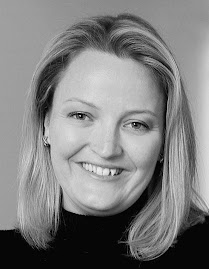









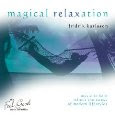
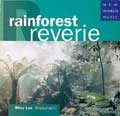
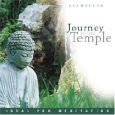





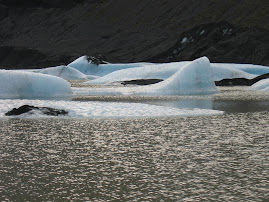

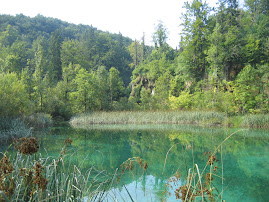

4 comments:
Hi Melanie,
It was really interesting to read your blog about your experiences moving your Massage from the UK to Australia. I am currently looking into doing a massage course here in the UK (I am Australian). What would be your recommendations when searching for courses? Are there well known Quals/schools/associations I should look out for to improve my ability to get work here? Are there things I should look for in relation to being able to transfer back home?
Hi Gabby,
thanks for your post - yes, it's been an interesting experience converting qualifications from the UK.
I did my main massage qualification through Essentials for Health (http://www.essentialsforhealth.co.uk/), which was a great course. I felt we were taught really well (over and above the syllabus) and essential aspects such as Anatomy and Physiology and the first aid component were all included in the course fees. It's a pricey course, but I understand it's one of the only courses in the UK to offer the BTEC qualification, which is the highest level of massage (technique) currently being taught in the UK. That could give you a point of differentiation amongst local therapists if you plan to stay in the UK. That said, BTEC is not recognised in Australia, so it's kind of academic if you plan to move back out to Oz and practice massage here.
I've also heard that Quantum Metta is a very good massage school.
In terms of finding a school, I went along to a one-day Massage Magic course at Essentials for Health and checked out their teaching style, the facilities and the teachers. I also went along to a clinic day and got a massage from one of the students at about their mid-point in the course - and I was impressed with the quality of the massages. That all helped me to make the decision. Obviously price factors into it, but I believe you get what you pay for - Oh, I also liked Essentials because their courses were over 10 weekends, over about 9 months. When you have to log 100+ practice hours of massage (as you have to do for the ITEC and BTEC qualifications), you sort of need the weekends spaced out so you can learn the practical, theory and fit in time for practice. They offer an intensive course, but it would have been too full on for me (I was working full time when I studied massage, so the weekend format suited me).
Once I finished the Massage course, i went on to do a seated massage course at TouchPro UK (http://www.touchpro.co.uk/) which had been recommended to us by the teachers at Essentials and other therapists - once you start hanging out with therapists you start to hear about other schools and courses of interest, and which are ok, and which are not worth doing.
The Touchpro course was also excellent - it's one of the pricier seated massage courses, but again, I'd rather know I was being taught well, and being shown how to take into consideration things like my posture - that kind of grounding in your training will probably determine how long you can actually practice as a massage therapist. If you're hurting your own hands or body as you're massaging, it will be a pretty short career!
When you starta course, you'll be asked to take out student's insurance for the duration of the course, which you can get through either the Complementary Therapists Association (http://www.complementary.assoc.org.uk/) or the Federation of Holistic Therapists (http://www.fht.org.uk/MainWebSite/Homepage7b0de317.aspx?Map=D0FAF8ABDB6468501877A861B18CD4BA. I think the student insurance was about £70 a year, and covers you for the practice hours you need to do outside of school.
I became a full member of the CHtA when I qualified, and then needed to take out full insurance, which was £99 a year.
In terms of looking out for qualifications to transfer back to Australia - the Australian Association of Massage Therapists (http://www.aamt.com.au) requires you to have the minimum of a Cert IV in Massage Therapy Practice and as you will have read in the post - I still needed to do an additional 30 hours of reflexology studies to qualify for what is the minimum insurable massage qualification by the AAMT.
That said, I was told more recently about the International Institution for Complementary Therapists (https://iict.worldsecuresystems.com/Index.htm), an Australian association, which actually will recognise qualifications from other countries without the need to get the Cert IV.
Basically, it seems that if you want to get any sort of masage jobs in hotels, spas, clinics etc, you need to have the Cert IV. If you want to run a private practice and have qualifications from the UK, you apparently don't need the Cert IV and can get insurance (public liability and professional indemnity) via the IICT's partnership with OAMPS.
I'm pushing on with getting the Cert IV so I have a recognisable qualification in Australia. I could also go on to do the more advanced Diploma in Remedial Massage, which would be about the same workload again as the original holistic massage qualification - but for the time being, am just going to focus on getting my own clients and experience.
Anyway - hope that helps. In's quite intriate when you start delving into all of this across countries! It's great fun and I find massage really rewarding, whatever hoops I need to jump through to be able to practice here.
Ping me an email at melanie_surplice@hotmail.com if you have any other questions.
Best regards,
Melanie
Hi Melanie
Your blog has been really helpful for me, I am in a similar situation and would like to move back to Oz next year after completing my ITEC Holistic massage dip. Can you tell me if the process of RPL was expensive?
Thanks
Hi there,
Glad the blog post was useful! As with most of this stuff there is not a straight answer, and you get different answers from whichever school you talk to.
The RPL process ended up costing me about AUD$1000, which included the Australian massage school's assessment of my UK qualifications and the tuition fees for an additional unit of study (a 3-week/30-hour reflexology unit).
If you do want the Cert IV, you'll need to ensure that its with an accredited RTO (registered training organisation) - only RTO's can issue recognised certificates for an accredited Cert IV in Massage Therapy Practice.
The fee probably varies from each school (alhough I'd read elesewhere that you could expect to pay between $600-$750 for an RPL). I was fairly annoyed that it cost me this much. But I would also get the RPL through a massage school rather than the Government service that also offers RPL assessments.
Feel free to contact me directly by email if you want to discuss further.
Cheers,
Melanie
Post a Comment